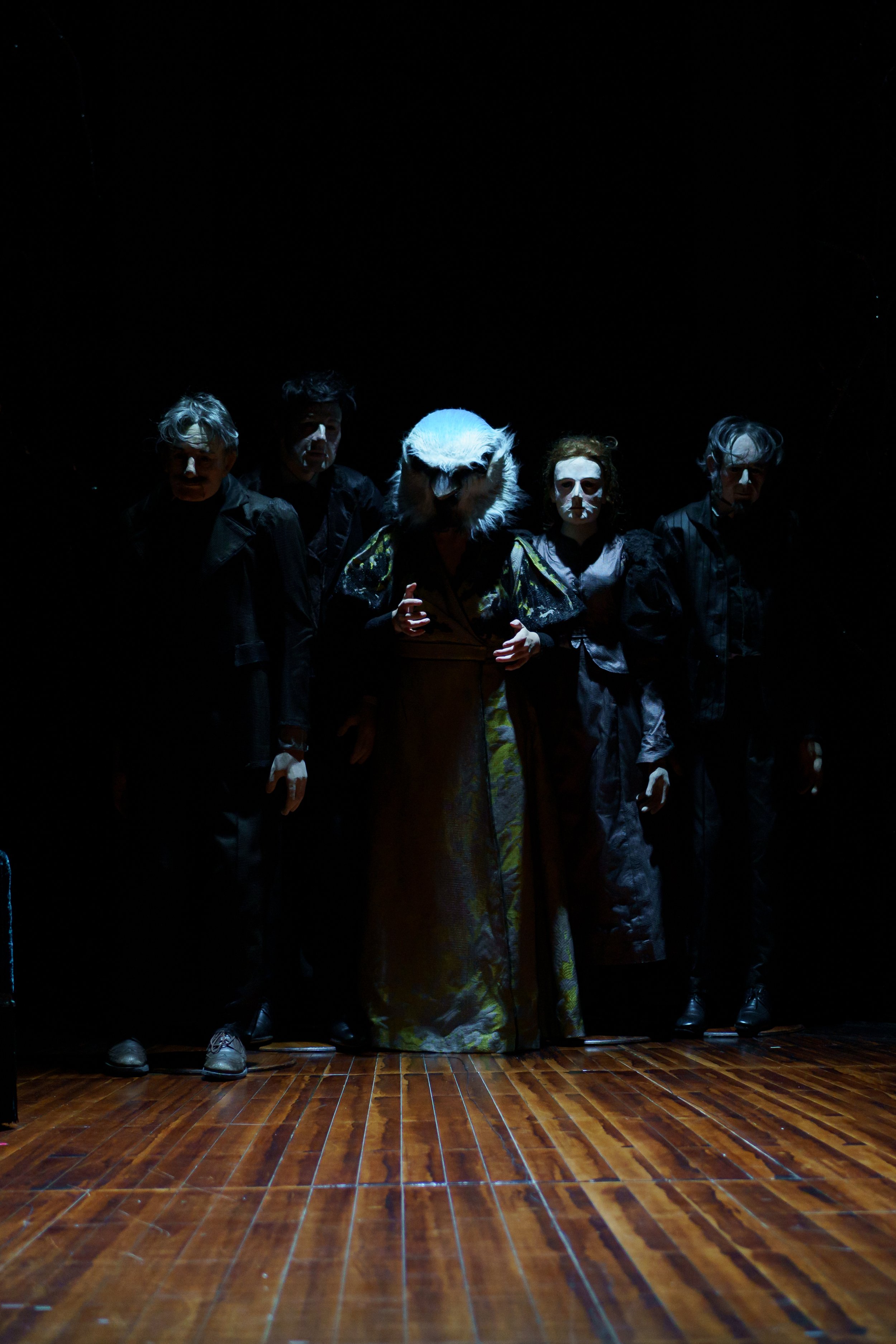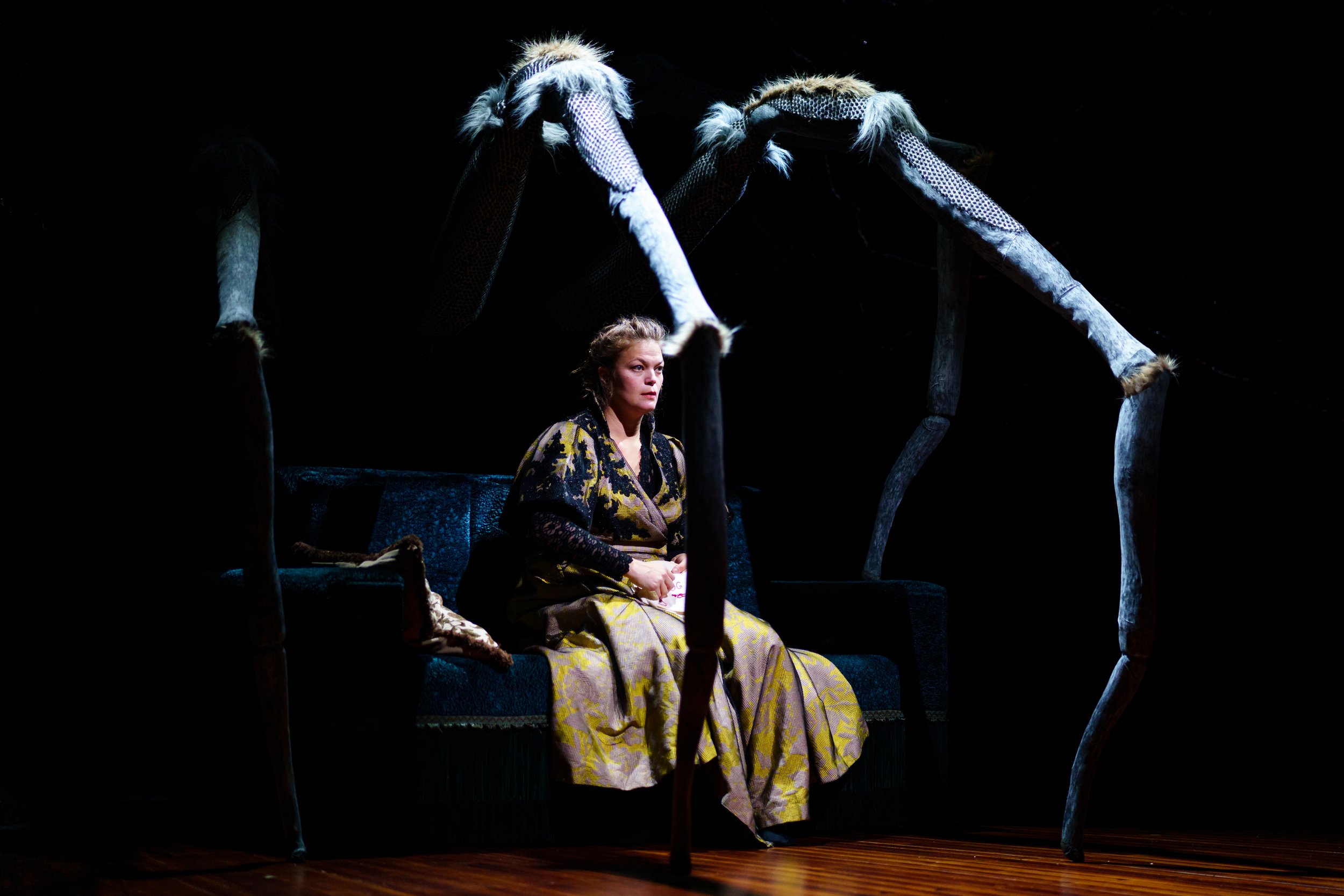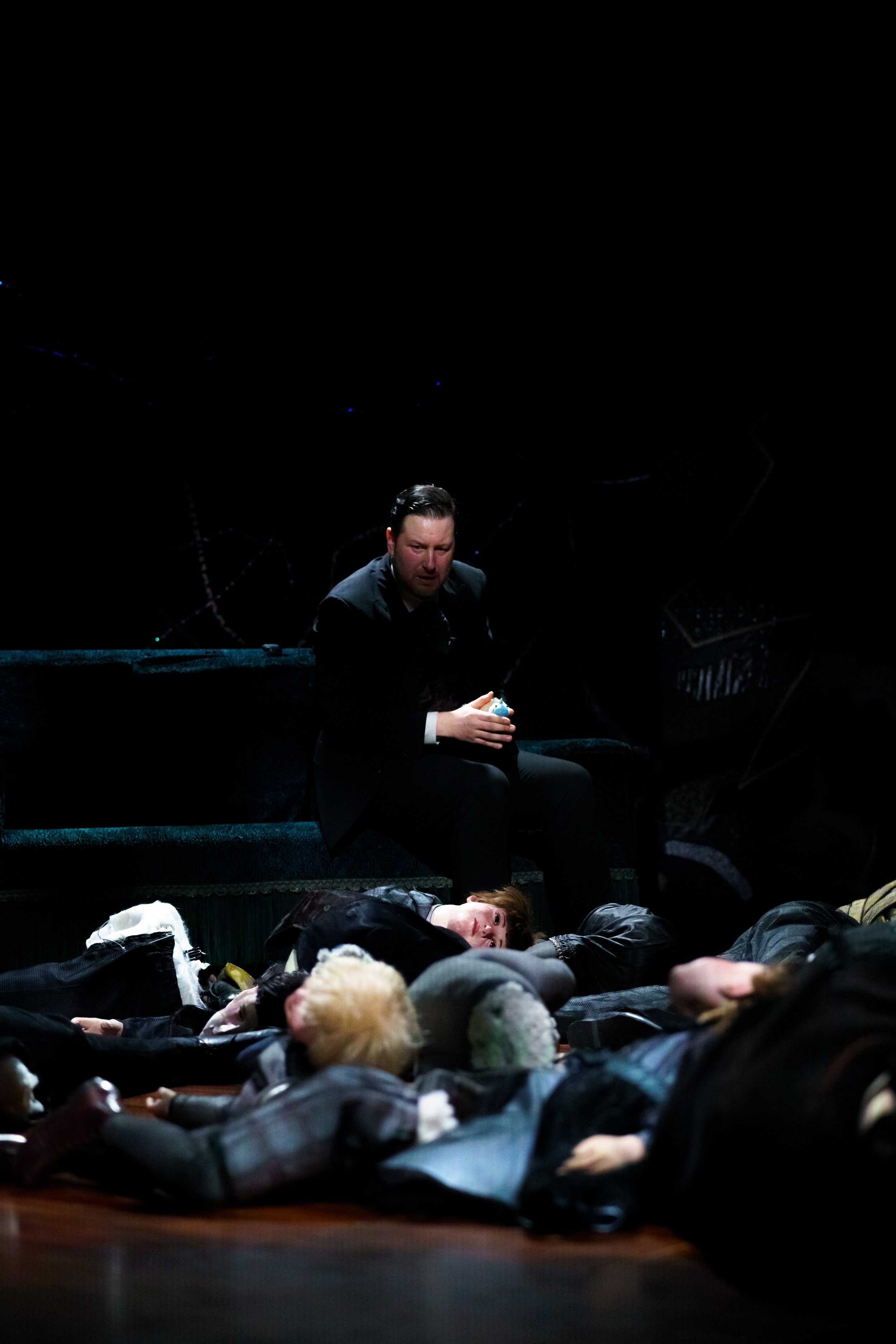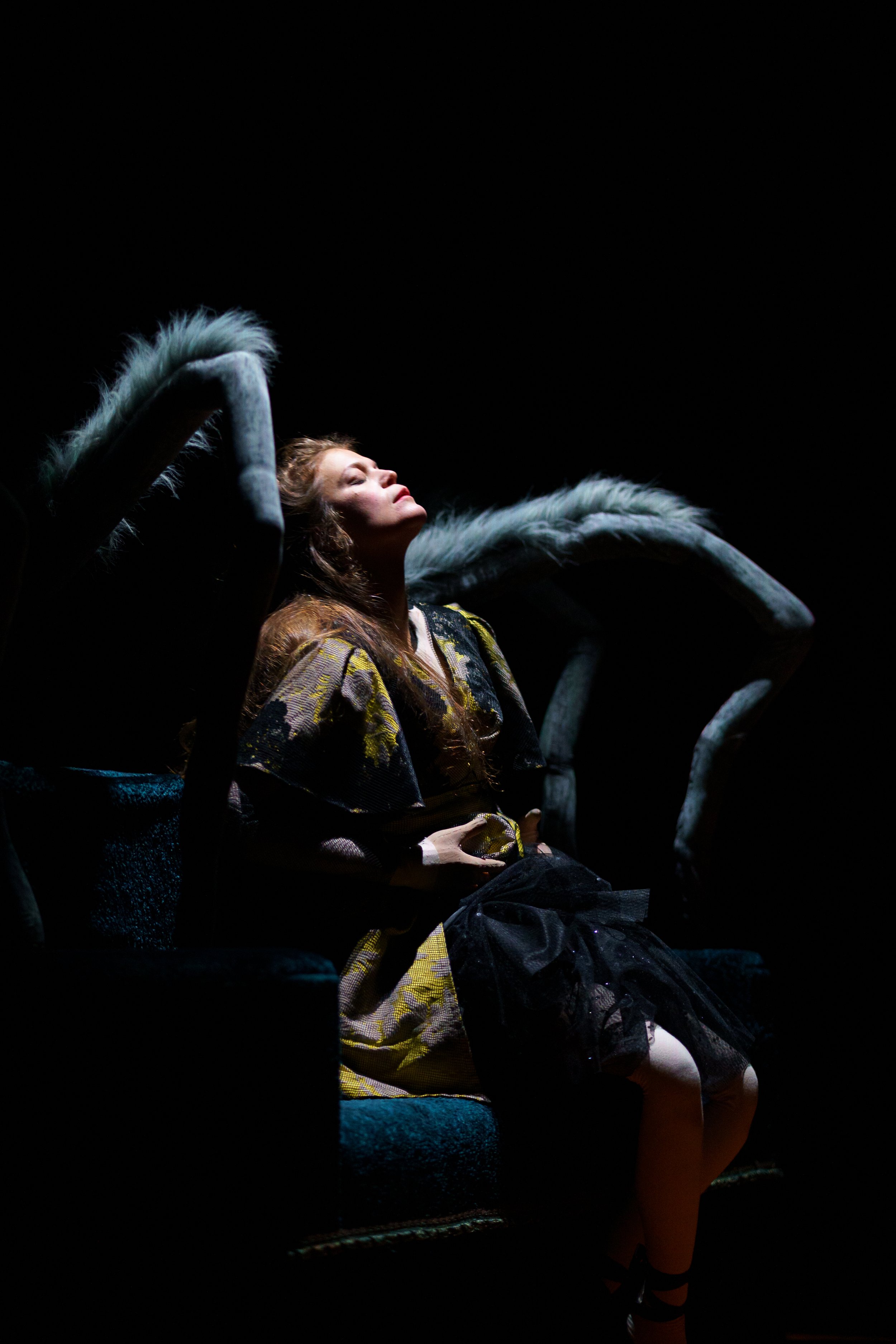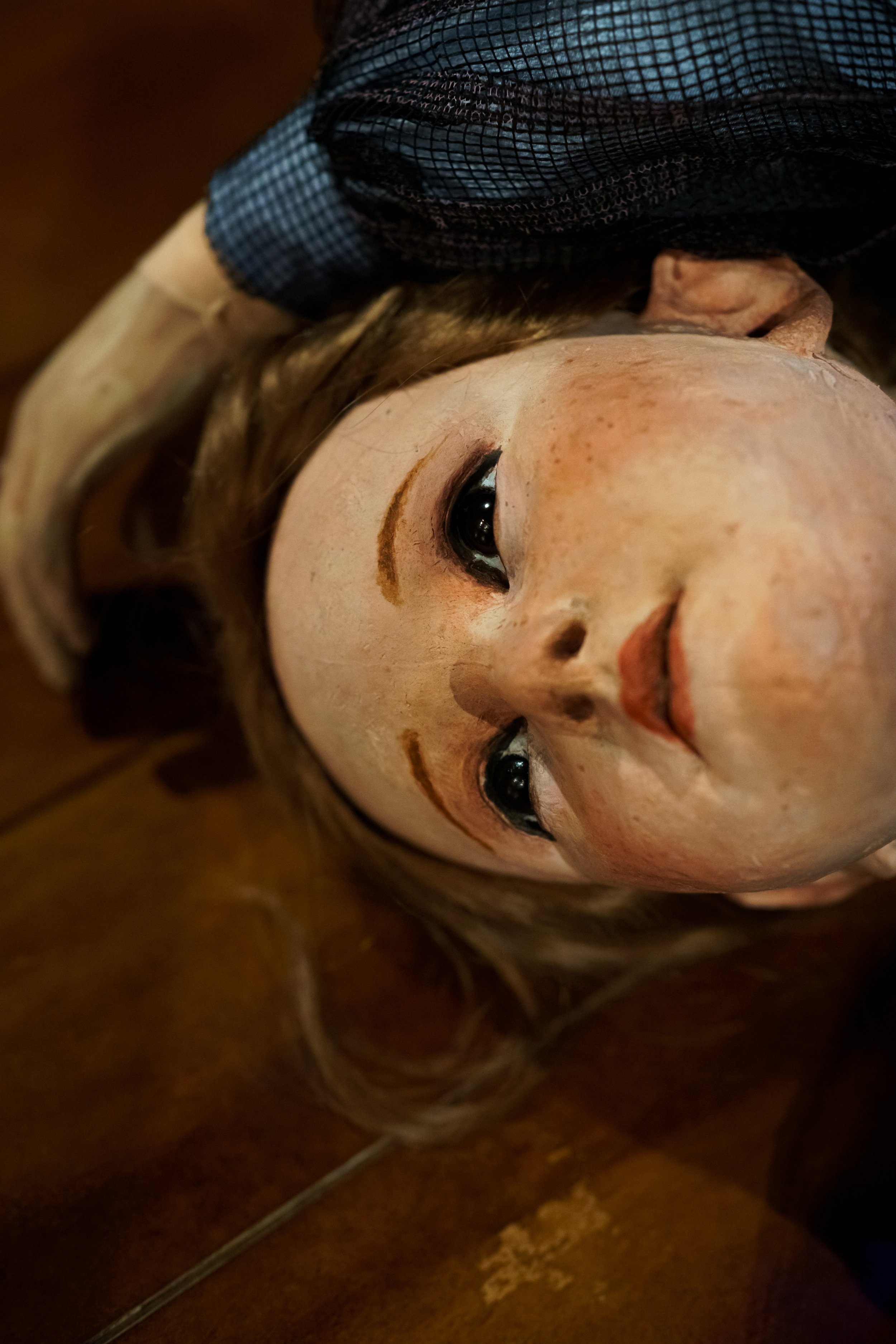THE SHOW - LETTER OF INTENT
"It all started with the sound of a bird crashing into my window.
It's a rainy day and I am sitting at my kitchen-table, curled up with a big cup of coffee and a good book, when I heard a “thump” against the window. This short, but immediately recognizable sound, instantly made me close my eyes. The sound of a bird crashing into my window. “Thump”. The sound echoed through my body, as if its vibrations stirred up long time quiet water, creating circling ripples that multiplied and grew until it filled my eyes. It was as if the moment the bird's bones cracked against the glass, something made of glass also cracked inside of me.
Annoyed of my own ridicules, I dried my eyes, picked up my book and took another sip of coffee. But the coffee had a bitter taste I hadn't notice before, and I couldn't concentrate on what I was reading. With a sigh I put down my book and walked over to the bookshelf. I stood there for a moment, my eyes searching among the titles, my hand suspended in front of'the book's backs, the sound of that bird still beating against my ribs. And my hand landed on A Doll's House by Henrik Ibsen.
Nora, the main character in A Doll's House, is known as a light-winged, chirping skylark. And she crashes, headfirst, into the invisible glass-surface of her own existence. A Doll's House is an old house filled with timeworn ghosts that still haunts us today. A story of the roles we play, the games we gamble, the illusions we surround ourselves with. It is about grabbing hold and letting go, and about dancing as if your life depends on it.
And I plan to make A Doll's House, that shakes and breaks and lets the old ghosts loose. An uncanny mix of actors and puppets, illusion and reality, dead birds and shattered windows.”
Yngvild Aspeli
PRESS
“A show of incredible force which was unanimously acclaimed.”
“It is largely because visible manipulation constantly interacts with the invisible that Nora’s transformation occurs. Yngvild Aspeli thus proves once again that the puppet really makes sense when it is a dramaturgical key, and not simply an illustration or story support. Thanks to this extremely precise work on the object and the superposition of several levels of play and reading, the show allows us to appreciate the full scope of Ibsen’s play, which goes well beyond the historical context and cultural where it fits, 19th century Norway. The question of freedom, which Nora chooses by finally leaving her husband who refuses to support her when he learns her secret, crosses the ages.”
“Stage a Doll’s House with puppets? As strange as it seems, no one had risked it. The idea is nevertheless self-evident, if only in the title of the play, which immediately suggests that a world of puppets is at stake here, incapable of finding the path to real life. The idea could have been too obvious, in fact. But Yngvild Aspeli avoids all the pitfalls, and produces an extremely strong show, which puts her mastery of puppetry at the service of the merciless dramaturgical mechanics invented by her compatriot Henrik Ibsen in 1879. (...) And then there are the spiders. At first tiny and discreet, over the course of the show they become enormous and invasive, referring to the key scene of the play, the one where Nora experiences a sort of liberating trance, while dancing the tarantella. We will keep it in our hearts for a long time, the mythological fight between Nora, magnificently played by Yngvild Aspeli herself, and the beast with tentacle legs.”
“A little before eleven o’clock this Sunday, a long line of spectators waited before Bayard, a sports hall in Charleville-Mézières. Some already know the work of the Norwegian Yngvild Aspeli, whose “Moby Dick” is fondly remembered. For others, it will be a shock. By adapting “A Doll’s House” of Henrik Ibsen, the director dives into one of the great Nordic classics. A piece that still resonates strongly today. ”
CREATIVE TEAM
Direction – Yngvild Aspeli and Paola Rizza
Actress-puppeteer – Yngvild Aspeli
Actor-puppeteer - Viktor Lukawski
Music composer – Guro Skumsnes Moe
Choir - Oslo 14 Ensemble
Puppet builders – Yngvild Aspeli, Sébastien Puech, Carole Allemand, Pascale Blaison, Delphine Cerf, Romain Duverne
Scenography – François Gauthier-Lafaye
Set building - Eclektik Sceno
Light designer – Vincent Loubière
Costume designer - Benjamin Moreau
Sound designer - Simon Masson
Stage technician and Manipulation - Alix Weugue
Dramaturg – Pauline Thimonnier
Choreography - Cécile Laloy
Head of Production and Booking - Claire Costa
Administration - Anne-Laure Doucet
Logistics - Gaedig Bonabesse
Producer - Noémie Jorez
Touring Info : Claire Costa clairecosta@plexuspolaire.com
PARTNERS
Production Plexus Polaire
Coproductions : Théâtre Dijon Bourgogne CDN (FR), Les Gémeaux, scène nationale de Sceaux (FR), le Bateau Feu, scène nationale de Dunkerque (FR), Le Trident, scène nationale de Cherbourg (FR), le Manège, scène nationale de Reims (FR), Figurteatret i Nordland, Stamsund (NO), Baerum Kulturhus (NO), Nordland Teater, Mo i Rana (NO), Teater Innlandet, Hamar (NO), Festival Mondial des Théâtres de Marionnette de Charleville-Mézières (FR), Ljubljana Puppet Theatre / Lutkovno gledališče Ljubljana (SL).
Supports : Kulturrådet / Arts Council Norway (NO), DGCA Ministère de la Culture (FR), DRAC et Région Bourgogne franche Comté (FR), Département de l’Yonne (FR).


